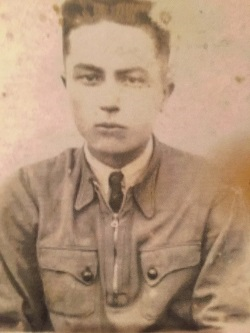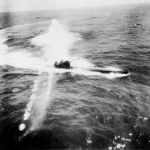In the last week of August, 1939, the seven members of the Kucharczuk (koo-HAR-chuck) family made their way from eastern Poland to Liverpool, part of a growing tide of immigrants seeking to escape Nazi Germany’s expansion and the threat of war it posed. (See blog post “Spirydon Kucharczuk, Part 2;” Feb. 1, 2016.)
There is no information about how the family traveled to England or how they spent their three days in Liverpool before boarding Athenia Saturday afternoon, Sept. 2, along with 539 other passengers. Accompanying the family’s patriarch, 41-year-old Spirydon, was his wife Ewdokia, age 40; son Jan, 20; daughter Neonela, 18; son Stefan, 15; daughter Aleksandra, 8, and son Jakeb, 2.
A little more than 24 hours later, at 7:39 p.m., Sunday, Sept. 3, all of Spirydon’s careful planning to move his family to Canada came crashing down when a German submarine torpedoed Athenia. With the signal to abandon ship, Jan somehow was separated from the rest of the family and did not appear at their lifeboat muster station.
Despite the protocol that required women and children to be taken off the ship first, the Kucharczuks managed to leave Athenia together, but without Jan. They apparently boarded Lifeboat 5A, launched on the starboard side of the ship and spent five or six hours in the boat before they were able to approach the large Norwegian cargo ship, Knute Nelson, the first rescue ship to arrive on the scene.
The Nelson had been on its way to Central America to pick up a cargo and was empty except for the ballast she carried to aid the ship’s stability. As a result she was riding high in the water, a factor that would have a tragic consequence during rescue operations.
When Lifeboat 5A approached the ship, likely sometime around 3 a.m., Sept. 4, three or four boats were lined up along the cargo ship’s hull, waiting for the chance to disembark their passengers at the base of a gangway deployed up the side Nelson’s hull. The ship’s sailors at first seemed reluctant for Boat 5A to fall into place behind the others, but eventually threw down a line to be tied off at the lifeboat’s bow. Boat 5A was the last in line and closest to Nelson’s stern. With rescue now at hand, everyone in the lifeboat relaxed.
Moments later the big ship unexpectedly started forward. The line to Boat 5A snapped and the boat was drawn into the vortex of the ship’s propellers churning inches below the water’s surface. The starboard propeller ripped through the bottom of the lifeboat, shattering its wooden hull and throwing its passengers into the ocean.
Spirydon fought his way to the surface of the water and called for his wife and children, his cries blending with the screams of others in the water. Almost immediately he found his oldest daughter, Neonela, who seemed injured and disoriented. They clung to a small piece of wreckage from the lifeboat. He called again and again to his wife and other children but there was no response. When other survivors tried to join Spirydon and Neonela, he feared their makeshift raft would be swamped and he made the painful decision to push free of the panicked swimmers.
After several minutes of supreme effort, they escaped the others, but Spirydon and Neonela had drifted a long way from the lights of the rescue operations and were alone in the wide, dark ocean with little prospect of being rescued. More about that in our next blog.




